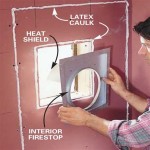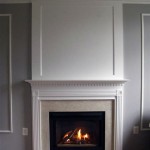Fireplace Slate Hearth: A Comprehensive Guide
A fireplace hearth serves as a crucial element in the design and functionality of a fireplace. It provides a non-combustible barrier, protecting the flooring and surrounding structure from the heat and embers produced by the fire. Among the various materials used for hearths, slate stands out as a popular choice due to its durability, aesthetic appeal, and unique properties. This article provides a comprehensive overview of fireplace slate hearths, covering their advantages, types, installation considerations, maintenance, and potential issues.
Slate is a fine-grained, foliated metamorphic rock derived from shale-type sedimentary rock composed of clay or volcanic ash. Its formation occurs through regional low-grade metamorphism. This process, involving heat and pressure, transforms the original shale into a dense, durable stone. The foliation, a key characteristic of slate, allows it to be split easily along planes of cleavage, creating the smooth, thin slabs commonly used in various applications, including fireplace hearths.
The use of slate in hearth construction dates back centuries, favored for its inherent fire resistance and ability to withstand high temperatures without cracking or warping. Furthermore, slate offers a natural, elegant aesthetic that can complement a wide range of interior design styles, from traditional to contemporary. Its natural variations in color and texture provide each hearth with a unique character, adding a touch of sophistication to the fireplace setting.
Advantages of Using Slate for a Fireplace Hearth
Slate offers a multitude of benefits when chosen as the material for a fireplace hearth. These advantages contribute to its popularity among homeowners and builders alike.
Durability and Heat Resistance: The metamorphic process that forms slate renders it exceptionally durable and resistant to heat. Unlike some other materials, slate can withstand the intense heat generated by a fireplace without cracking, warping, or discoloration. This inherent heat resistance makes it a safe and reliable choice for a hearth. Its dense composition also makes it resistant to scratches and impacts, ensuring its long-lasting performance.
Aesthetic Appeal: Slate’s natural beauty is a significant factor in its appeal. The stone exhibits a range of colors, from deep black and gray to shades of green, purple, and red. These colors are often interspersed with subtle variations and veining, creating a unique and visually appealing surface. Slate can be honed to a smooth, matte finish or left with a more textured, natural cleft surface, allowing for customization to suit different design preferences. The natural elegance of slate adds a touch of sophistication and timelessness to any fireplace setting.
Low Maintenance: Compared to other hearth materials, slate requires relatively little maintenance. Its non-porous surface resists staining and is easy to clean with simple household cleaners. Regular sweeping or vacuuming to remove ash and debris is typically sufficient to maintain its appearance. Periodic sealing can further enhance its stain resistance and protect against water damage, although it is not always necessary. The ease of maintenance makes slate a practical choice for busy homeowners.
Environmentally Friendly: Slate is a naturally occurring material that is quarried from the earth. Its extraction generally has a lower environmental impact compared to the manufacturing of synthetic materials. Furthermore, slate is a durable and long-lasting material, reducing the need for frequent replacements. It can also be recycled or repurposed at the end of its lifespan, making it a more sustainable option.
Types of Slate Finishes for Fireplace Hearths
The finish applied to a slate hearth significantly impacts its appearance and texture. Different finishes offer varying levels of slip resistance and aesthetic qualities. Choosing the right finish is crucial for achieving the desired look and functionality.
Natural Cleft: A natural cleft finish retains the original, textured surface of the slate as it is split along its cleavage planes. This finish provides a rustic and natural look, with subtle variations in height and texture. It offers excellent slip resistance, making it a safe choice for hearths, especially in areas with high foot traffic. However, the textured surface can be slightly more challenging to clean than smoother finishes.
Honed: Honed slate has been ground to a smooth, matte finish. This finish provides a more refined and contemporary look, while still retaining the natural beauty of the stone. Honed slate is easier to clean than natural cleft slate, but it may be slightly more susceptible to scratches. It offers a good balance between aesthetics and practicality.
Polished: Polished slate has been ground and buffed to a high-gloss finish. This finish creates a sleek and elegant look, reflecting light and enhancing the color variations in the stone. Polished slate is the easiest to clean but can be slippery, especially when wet. It is therefore less suitable for hearths in areas with high foot traffic or where spills are likely to occur. The high-gloss finish may also show scratches more readily.
Sealed: Regardless of the finish chosen, sealing the slate is often recommended to protect it from staining and water damage. A sealant penetrates the pores of the stone, creating a barrier against liquids and dirt. Sealants are available in various formulations, including penetrating sealers, which do not alter the appearance of the slate, and enhancing sealers, which can deepen the color and bring out the natural variations in the stone.
Installation and Maintenance Considerations for Slate Hearths
Proper installation and regular maintenance are essential for ensuring the longevity and performance of a slate fireplace hearth. Careful attention to detail during installation and a consistent maintenance routine will help preserve its beauty and functionality.
Substrate Preparation: Before installing a slate hearth, the substrate must be properly prepared. The substrate should be level, clean, and structurally sound. Any existing flooring or debris should be removed, and any imperfections should be repaired. A layer of cement board or a similar underlayment can be applied to provide a stable and even surface for the slate. This is especially vital if the existing subfloor is wood, as it provides a fire-resistant barrier.
Adhesive Selection: Choosing the right adhesive is crucial for securing the slate to the substrate. A high-quality thin-set mortar designed for use with natural stone is recommended. The mortar should be applied evenly to the substrate, and the slate should be carefully positioned and pressed into place. Spacers can be used to ensure uniform grout lines. Allow the mortar to cure completely before applying grout.
Grouting: After the mortar has cured, the grout lines between the slate tiles should be filled with grout. A sanded grout is typically recommended for slate, as it provides a more textured and natural look. The grout should be applied evenly and excess grout should be wiped away with a damp sponge. Allow the grout to cure completely according to the manufacturer's instructions.
Sealing (Optional): While not always necessary, sealing the slate can provide added protection against staining and water damage. A penetrating sealer is recommended for slate, as it does not alter the appearance of the stone. The sealant should be applied according to the manufacturer's instructions. Regular cleaning with a pH-neutral cleaner will help maintain the appearance and protect the sealer.
Regular Cleaning: Regular cleaning is essential for maintaining the appearance of a slate hearth. Sweep or vacuum the hearth regularly to remove ash, dust, and debris. Wipe the hearth with a damp cloth or sponge to remove spills and stains. Avoid using harsh chemicals or abrasive cleaners, as these can damage the surface of the slate. A pH-neutral cleaner specifically designed for use with natural stone is recommended.
Preventive Measures: Taking preventive measures can help protect the slate hearth from damage. Use a fireplace screen to prevent embers from landing on the hearth. Avoid placing heavy objects on the hearth, as this can cause scratches or cracks. Clean up spills immediately to prevent staining. By following these simple tips, one can extend the life and maintain the beauty of a slate fireplace hearth.
In conclusion, selecting a slate fireplace hearth offers significant advantages in terms of durability, aesthetics, and ease of maintenance. By carefully considering the type of slate, the desired finish, and the installation and maintenance requirements, one can ensure a beautiful and functional addition to any fireplace setting.

Black Slate Hearth Silverland Stone

Slate Hearths Premium Quality Grey Stone Ltd

Black Slate Hearth For Fireplace The Architectural Forum

Slate Hearths Fireplace Surrounds Lbs

Slate Hearths Premium Quality Grey Stone Ltd

Hearths Slate

Fireplace With One Of Our Made To Measure T Shaped Slate Hearths

Natural Slate Hearths Cut To Size Scarlett Fireplaces

Welsh Slate Hearth Hearths Fireplace

Slate Fireplace Hearths Primethorpe Paving
Related Posts








